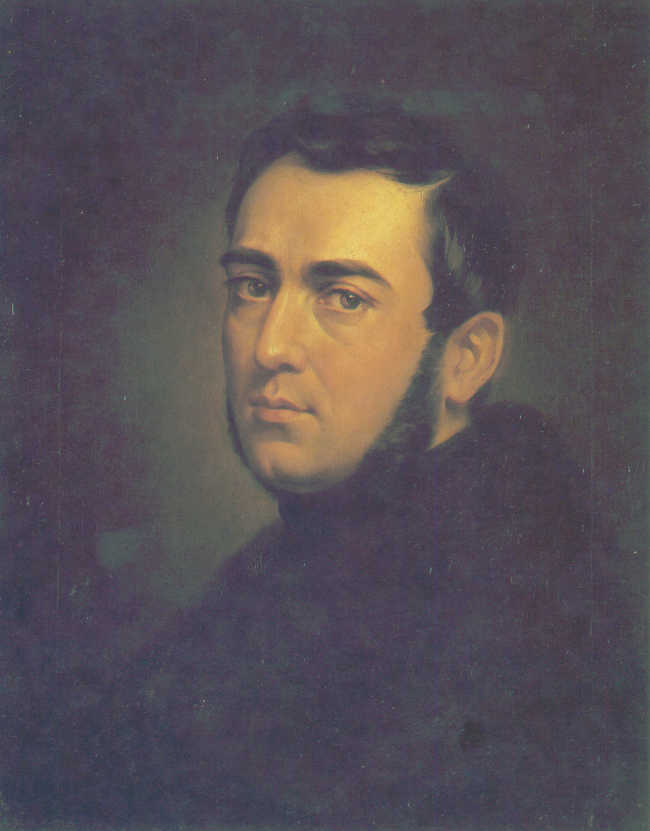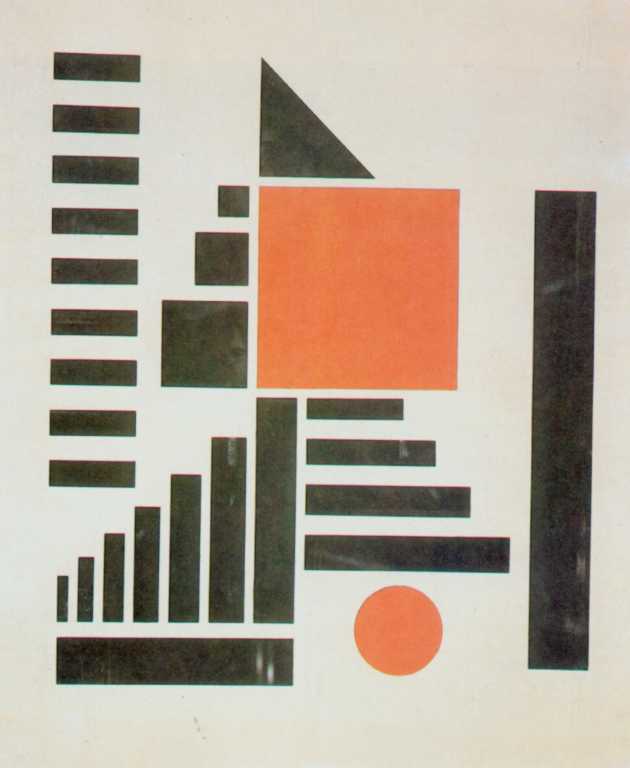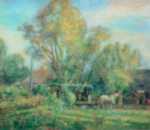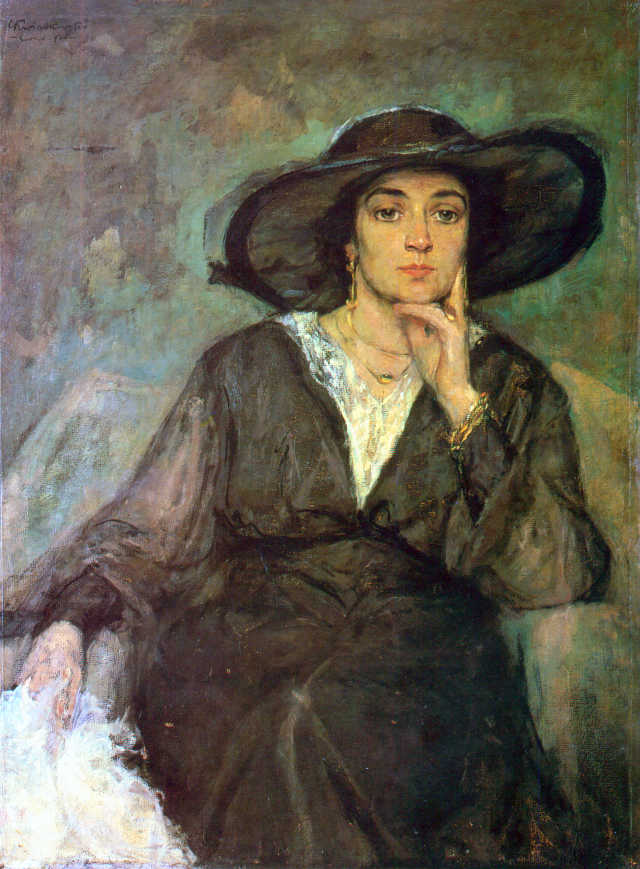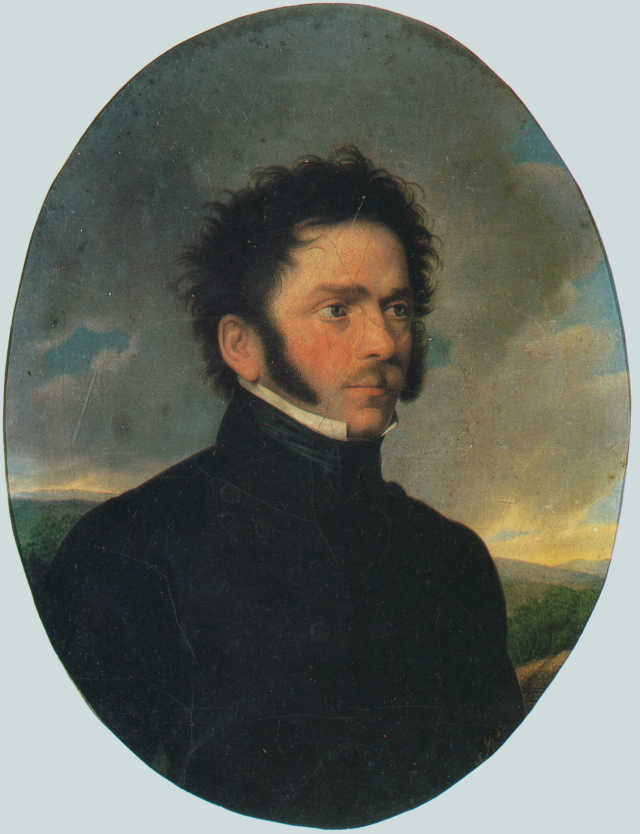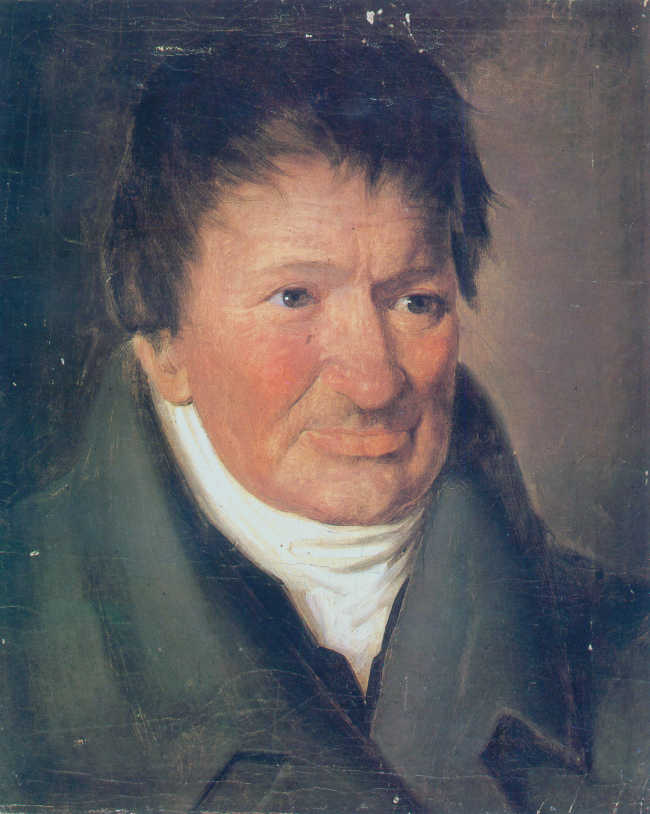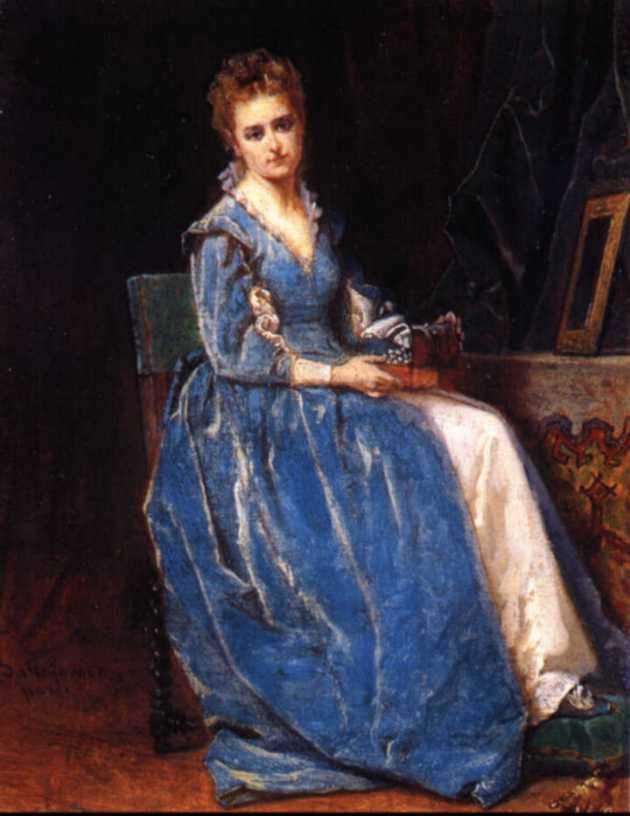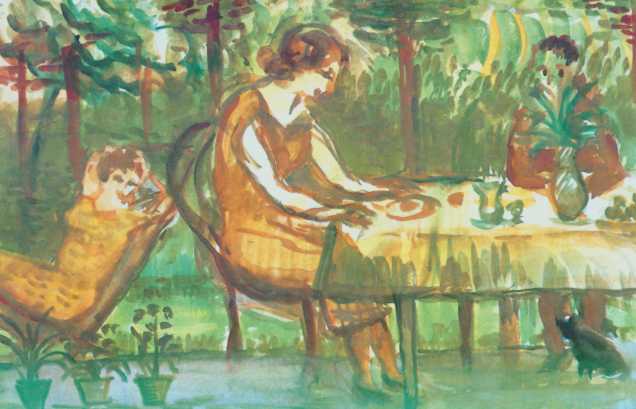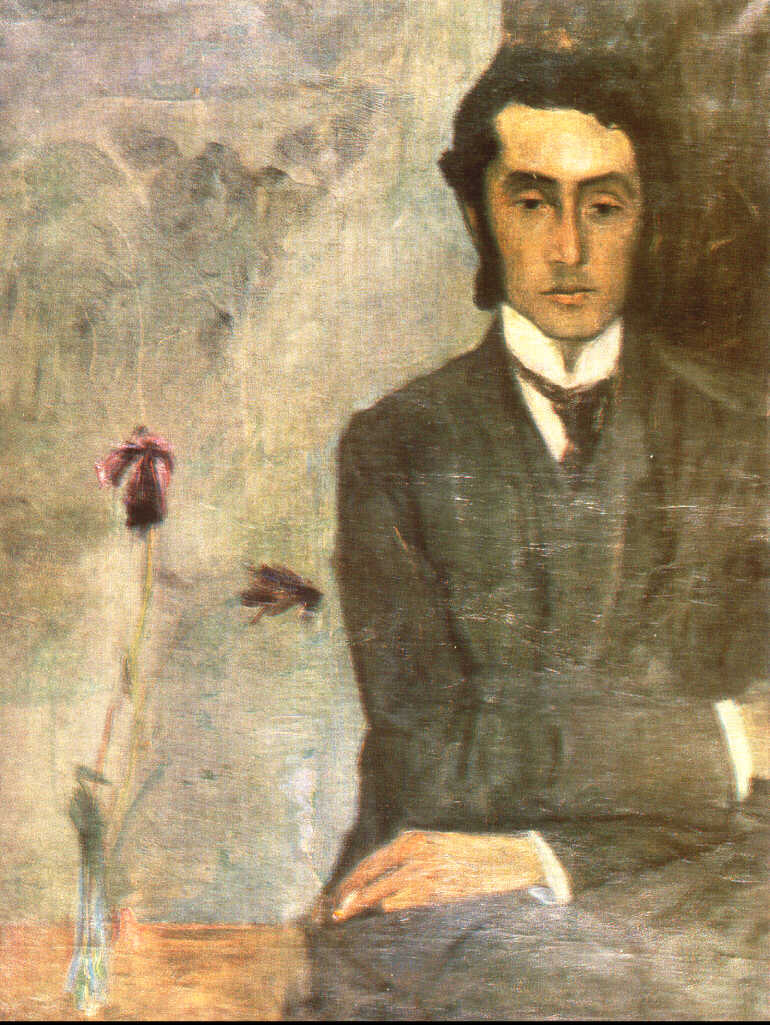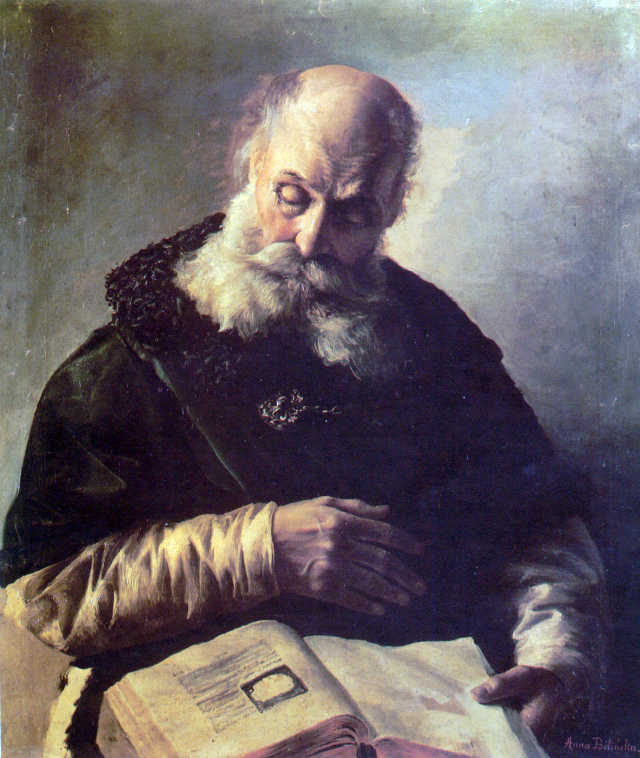Brandt, Joseph (ur. 1841 Szczebrzeszyn, zm. 1915 Working).
Son of Alfons Jan the doctor and Krystyna née Lessel, amateur painters. He studied in Warsaw at the school of J.. N. Leszczyński. W 1858 r., after graduating from the Noble Institute, he went to Paris to study at Ecole des Ponts et Chaussees, but at the urging of J.. Kossaka decided to abandon engineering studies and start painting. For some time he studied in the studio of L.. Cogniet and initially used the advice of H.. Rodakowski and J. Kossak. With the latter he came back in 1860 from Paris to Poland and traveled with him through Ukraine and Podolia. W 1861 exhibited at the TZSP in Warsaw for the first time watercolors and drawings on topics drawn from historical poems.. by, K. Suffczyński, A. Mickiewicz, W. Rzewuski – in the manner of Kossak. From 1862 studied in Munich, working mainly under the direction of F.. Adama, as well as T.. Horschelt and K. V. Pilotyego.
He settled in Munich (he spent only the summer months at the Orońsk estate near Radom), where from 1866 he had his own studio, which became the focus of all Polish artists. From approx. 1875 he ran a kind of non-official school for young painters, mainly Poles. It was very successful in a relatively short time, which was accompanied by financial successes.
He was primarily concerned with the subject of battle. The areas of action taking place in his paintings were most often the eastern borderlands of the Republic of the 17th century. In the era of the Cossack wars and the Tatar invasions. He also often took up topics related to the Swedish invasion. Often drawing from literary works and historical sources (np. Memoirs Easter), he created his own original painting visions, in which he generally avoided strictly historical moments. Lisowczyki, Cossacks, Tatars, knighthood in the 17th century. – are the main motifs of Brandt's paintings, where the most important role was played by the horse in effective movement and the colorful figures of the riders in the heat of battle. He showed hunting scenes and bazaars with equal passion.
The most famous paintings are: Czarniecki near Koldynga (1870), Reflection of the glaze (1877), Welcoming the steppe (1877), Meeting in the city (1884), Fair in Bałta, The Confederates of Bar (1875), Street in Chocim (1875). The later period of creativity is marked by a significant decrease in the level. Still in demand on the art market, Skirmishes, Courtship, Battle, The fairs show signs of distinct manner.
Son of Alfons Jan the doctor and Krystyna née Lessel, amateur painters. He studied in Warsaw at the school of J.. N. Leszczyński. W 1858 r., after graduating from the Noble Institute, he went to Paris to study at Ecole des Ponts et Chaussees, but at the urging of J.. Kossaka decided to abandon engineering studies and start painting. For some time he studied in the studio of L.. Cogniet and initially used the advice of H.. Rodakowski and J. Kossak. With the latter he came back in 1860 from Paris to Poland and traveled with him through Ukraine and Podolia. W 1861 exhibited at the TZSP in Warsaw for the first time watercolors and drawings on topics drawn from historical poems.. by, K. Suffczyński, A. Mickiewicz, W. Rzewuski – in the manner of Kossak. From 1862 studied in Munich, working mainly under the direction of F.. Adama, as well as T.. Horschelt and K. V. Pilotyego.
He settled in Munich (he spent only the summer months at the Orońsk estate near Radom), where from 1866 he had his own studio, which became the focus of all Polish artists. From approx. 1875 he ran a kind of non-official school for young painters, mainly Poles. It was very successful in a relatively short time, which was accompanied by financial successes.
He was primarily concerned with the subject of battle. The areas of action taking place in his paintings were most often the eastern borderlands of the Republic of the 17th century. In the era of the Cossack wars and the Tatar invasions. He also often took up topics related to the Swedish invasion. Often drawing from literary works and historical sources (np. Memoirs Easter), he created his own original painting visions, in which he generally avoided strictly historical moments. Lisowczyki, Cossacks, Tatars, knighthood in the 17th century. – are the main motifs of Brandt's paintings, where the most important role was played by the horse in effective movement and the colorful figures of the riders in the heat of battle. He showed hunting scenes and bazaars with equal passion.
The most famous paintings are: Czarniecki near Koldynga (1870), Reflection of the glaze (1877), Welcoming the steppe (1877), Meeting in the city (1884), Fair in Bałta, The Confederates of Bar (1875), Street in Chocim (1875). The later period of creativity is marked by a significant decrease in the level. Still in demand on the art market, Skirmishes, Courtship, Battle, The fairs show signs of distinct manner.
Grabbing a horse on a rope
oil, canvas, 83,5 x 73,5 cm;
Lviv Picture Gallery;
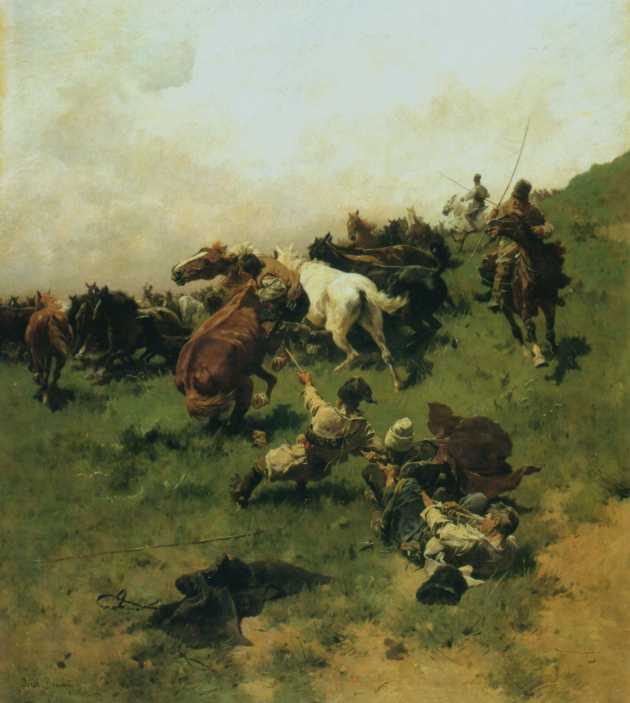
oil, canvas, 83,5 x 73,5 cm;
Lviv Picture Gallery;

Farewell, the Cossack of the horse watered
oil, canvas, 39 x 61,5 cm;
Lviv Picture Gallery;
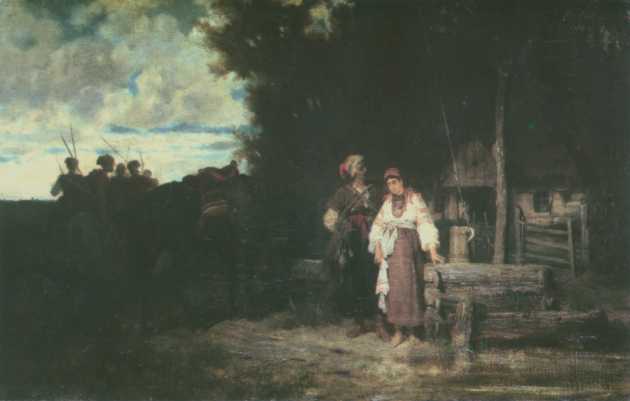
oil, canvas, 39 x 61,5 cm;
Lviv Picture Gallery;

A study of a black horse
oil, canvas stuck to cardboard, 21 x 23,5 cm;
signed lower left: JB;
from the AGRA-ART Auction House catalog;
oil, canvas stuck to cardboard, 21 x 23,5 cm;
signed lower left: JB;
from the AGRA-ART Auction House catalog;

